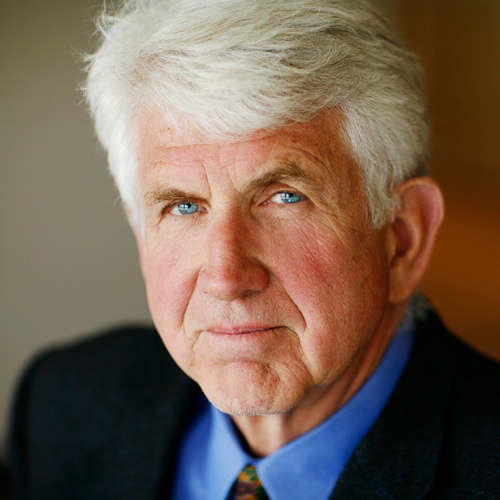
The University of Texas at Austin │ Austin, Texas
For his pioneering role in the design, development, and commercialization of Ethernet, an interface for networking and file sharing between computers.
Whether for work or for leisure and entertainment, most of us use computers every day. Much of that use involves communication—sharing and passing along various types of messages and information between people, facilitated by computers, or more precisely, computer networks, from small collections of computers in a single office building to millions across the planet on the Internet. Making that work requires technological standards and methods that allow all those different machines to connect easily and efficiently. One of the most ubiquitous and important, even half a century after it was first conceived, is Ethernet technology, the brainchild of visionary electrical engineer Robert Metcalfe.
Like many inventions, Ethernet was born out of practical necessity, to fulfill a specific need. In 1973, with a freshly-minted Ph.D. in computer science from Harvard, Metcalfe was working at Xerox PARC (Palo Alto Research Center), a nexus of many seminal computer developments. PARC had a challenge to solve: it wanted to put its newly-developed Alto personal computer on every desktop in the building, and all the computers had to be connected to each other, a newfangled laser printer (also invented at PARC), and the outside world through the predecessor to the internet, ARPANET. The system needed to be inexpensive and efficient, allowing two-way communications among computers using a simple layout that would be easily expandable to add other machines later.
Tasked to solve the problem, Metcalfe took a page from his doctoral thesis, in which he had studied the ARPANET and an early networking system called ALOHAnet developed at the University of Hawaii. Working with David Boggs, Metcalfe conceived the idea of the “Ethernet” local area network (LAN), naming it after the “ether” once believed to provide the medium through which radio and other electromagnetic waves passed. Here, however, the “ether” consisted of the coaxial cable through which networked computers would pass and exchange data. Metcalfe envisioned a structure in which information is transmitted, as in the ARPANET, in short bits of data called packets or frames, containing the source and destination address along with clock synchronization and error-checking data. The Ethernet protocol automatically adjusts if packets from different sources “collide” (attempt to transmit at the same time) and retransmits data as needed. It can easily scale to accommodate additional devices in the network as needed. Metcalfe led the Xerox Corporation’s 1975 patent application for Ethernet, and later was the prominent force that convinced Xerox, DEC (Digital Equipment Corporation), and Intel to work together to develop a common open Ethernet standard. Though other LAN technologies and protocols have been developed, none has proved as successful or as useful as Ethernet, which brought packets to the desktop and personal computers onto the internet.
Metcalfe began his career at the Massachusetts Institute of Technology, where he earned two bachelor’s degrees in 1969, one in electrical engineering and one in industrial management. He went on to earn a master’s degree at Harvard in applied mathematics in 1970 and a doctorate in computer science in 1973. His eclectic range of education soon proved a decided advantage in the career and work that followed, which has encompassed not only engineering and science but management and entrepreneurship. Moving on from Xerox Corporation in 1979, he founded 3Com Corporation to commercialize and spread Ethernet technology. Over the next decade, his leadership of 3Com and its role as a prominent networking company helped to make Ethernet the dominant technology in the world for LAN and WAN (wide area networks) systems. After leaving 3Com in 1990, he continued to work as an entrepreneur, publisher and magazine columnist, and educator, finally joining the engineering faculty of the University of Texas at Austin from 2011 to 2021. In 2022 he became a research affiliate of MIT’s Computer Science and Artificial Intelligence Laboratory (CSAIL), as well as an emeritus engineering professor at the University of Texas.
The importance and far-reaching impact of Metcalfe’s work have been acknowledged by a wide range of prestigious awards, including the Association for Computer Machinery (ACM) Turing Award, the Institute of Electrical and Electronics Engineers (IEEE) Medal of Honor, the National Medal of Technology, and the Marconi Society’s Marconi Prize. He has also been elected to the National Academy of Engineering, the American Academy of Arts and Sciences, and the National Inventors Hall of Fame.
Known among his colleagues as an “engineer’s engineer,” Robert Metcalfe is the driving force behind one of the most transformative technologies of the 20th century and beyond—one that nearly all of us use every single day. In a very real sense, his work provides the vital technological background of the networks that allow everyone in the entire world to communicate, share, and connect.

